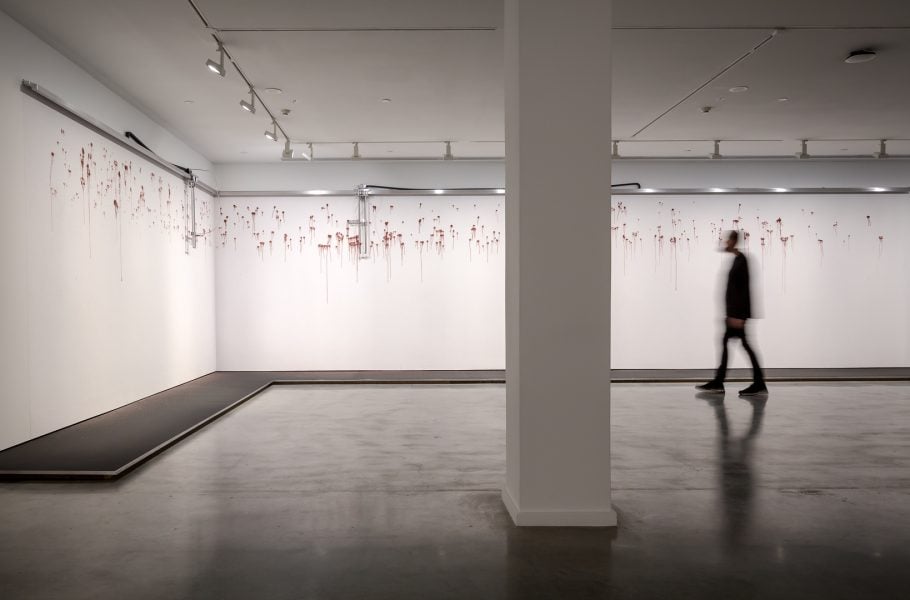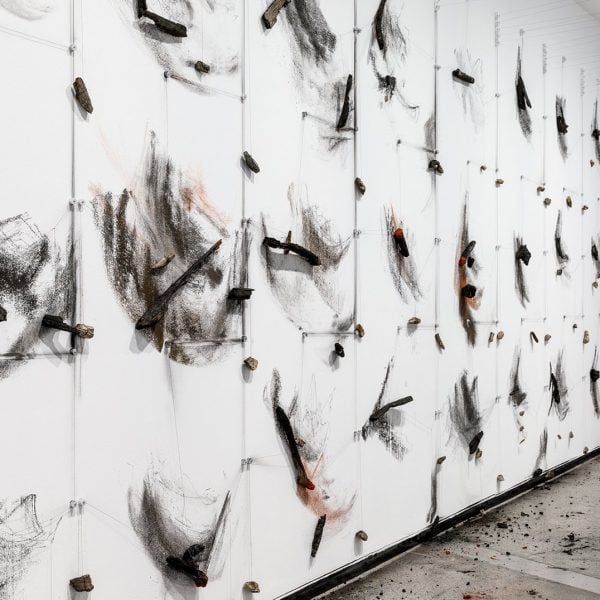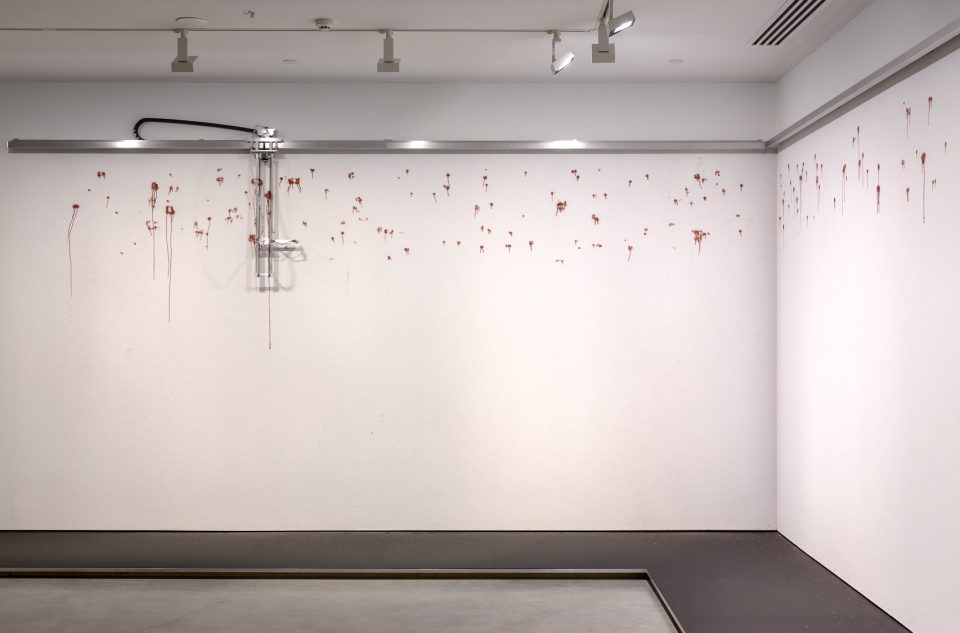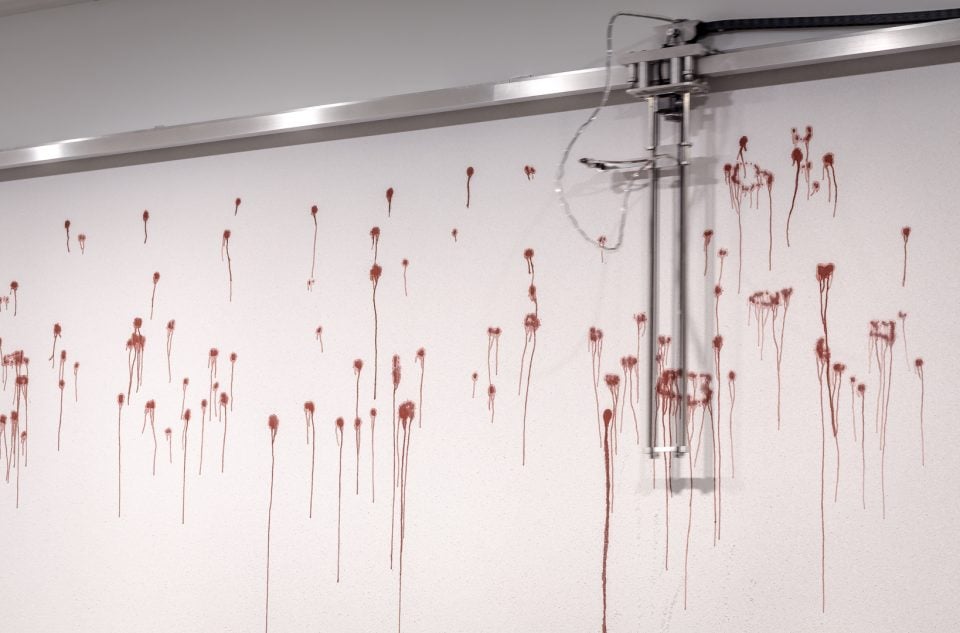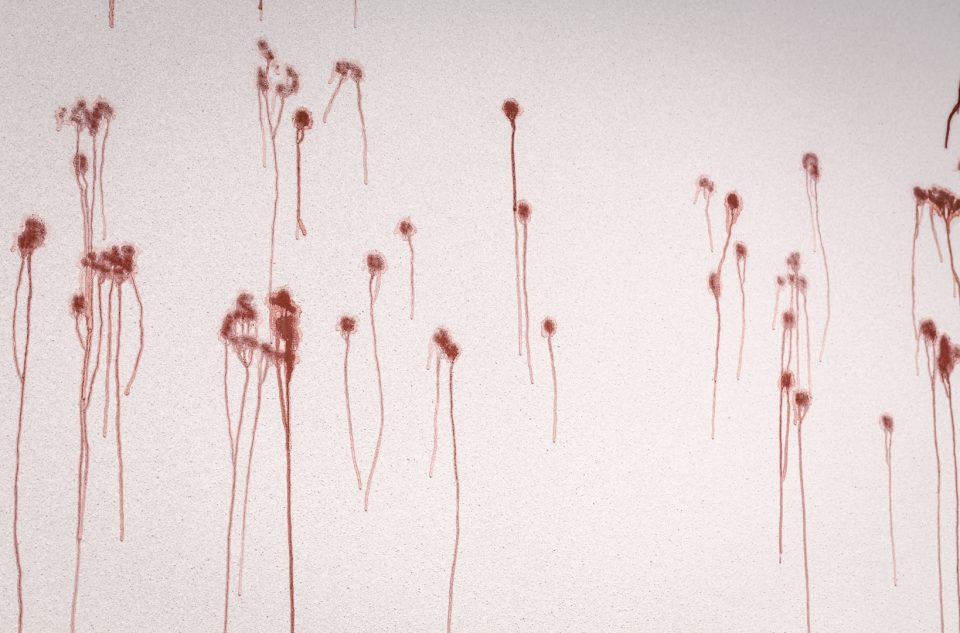A Connective Reveal, 2022–ongoing
ochres, oxides, chalk, aluminium composite panels, and electro-mechanical components
Courtesy the artist & Milani Gallery, Brisbane
Commissioned by the Biennale of Sydney with generous support from the Australia Council for the Arts
Robert Andrew seeks to unearth Aboriginal and Torres Strait Islander histories and languages that have been buried through processes of colonisation. A descendent of the Yawuru people of the Broome area in the Kimberley, Western Australia, with Indigenous, European, and Filipino heritage, he has described his practice as a way of ‘reconfiguring truths and myths… and slowly building an image that gives a more honest look into Australian colonising history.’
In his Connective Reveal series, Andrew uses what he calls a palimpsest machine; a modified 3D printer programmed to wash away mineral layers from prepared surfaces. A palimpsest is a writing surface that has been repeatedly written over and still bears traces of earlier, partially erased forms. In this new work, two palimpsest machines dispense jets of pressurised water onto the MCA walls that have been covered in thin layers of earth pigment and a final layer of chalk. As the water hits the wall, it slowly reveals lines of text in language that bleed through the white surface, creating ochre-stained tributaries.
Nagula, 2021
Yawuru language,
Kimberley region Western Australia.
‘Nagula: Long time
salt water.
Fluid.
All the things
underneath, around and in it
cycle and change
over time.
Tides,
Gatherings of people
Long time.
Water wanders, weaves, entwines and enmeshes, ever cycling and changing.
Salt bush,
Marsh,
Swamp,
Mangroves,
Fresh water rivulets.
Taking the path of least resistance water unearths and erodes, embedding its ancient knowledge as landscape.
Etching landscapes, forming, shaping and recording culture.
Water as life force forms, shapes and guides where we congregate and share in its offerings.
From childhood I recall the tidal-flats of Broome where thousands of years of floods and tides have manipulated and shaped the earth beneath my feet.
Wet feet. Muddy feet. Squelching feet. Dry feet. Soft on sand. Hard on rock.
I peer at thousands of water paths that describe water’s journey through environments that shape our experience and inform our language.
My work for the Sydney Biennale reflects on ancient systems of earth and people.
Intangible long relationships of water, sea, earth and sky in the formation of culture are made visible. I speak to the terrain beneath my feet and I invite old cultural words to seep into my consciousness.
I am left to discover what will seep out, sit as residue and build.
— Robert Andrew
Words by Robert Andrew, Jenna Baldock, and Jan Oliver.
